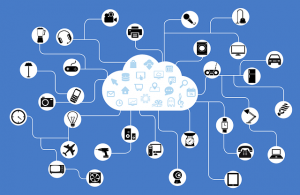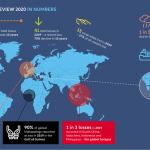5 Ways the Internet of Things Is Revolutionizing the Supply Chain
This is a guest post by Samuel Reeds.

In the contemporary world, the pace of technological progress is truly astounding. Consequently, the rate at which new technologies are implemented in everyday life and commerce is becoming quite rapid as well. For instance, supply chain logistics are on the verge of being revolutionized by the Internet of Things and the assorted technologies.
The demand for further implementation is rising due to the exponential rise of e-commerce in the past decade. All organizations look forward to being able to meet delivery deadlines for their parts of the supply chain with more precision than ever before. We’re going to take a look at five ways the Internet of Things will impact the supply chain in the future.
1. Packages From Pallets
For most of its existence, the shipping industry and the manufacturers that act as suppliers have worked by transporting their products via pallets or containers through a variety of distribution centers. However, the advent of newer technologies has changed things. Companies are becoming increasingly focused on delivering items in the form of packages directly to the end-user — the consumer.
In order to achieve this, customers need to be able to keep tabs on the ordered items. Visibility in real-time is an important aspect of the supply chain. The importance increases once the consumers become an active participant in it, rather than just a passive receiver. This is something that the Internet of Things technologies have proven capable of providing.
There are beacons that function via Bluetooth and require little to no energy. These are known as Bluetooth Low Energy, otherwise referred to as BLE. These beacons represent an extremely cost-effective piece of technology. When it comes to real-time tracking of each individual package and the inventory as a whole, such tech is immensely helpful. It’s like having “digital barcodes” that don’t require any cumbersome manual scanning that slows down the entire process.
Instead, there is a continuous flow of information. You get information regarding the condition, location, and identity of each asset in the supply chain. For environmentally-sensitive packages, this may even include information on the humidity levels in the vicinity of the package or the current temperature. Some estimate that by next year, almost four hundred million BLE will be in use in the logistics industry.
2. BLE Uses
As we’ve shortly mentioned above, BLE sensors provide more than just location tracking. For instance, plenty of industries require the transportation of products using temperature-controlled containers and vehicles.
The food industry comes to mind almost immediately — but in reality, this is just as important for high-value pharmaceutical companies. If a security breach or anything else compromises the integrity of the shipment, these companies are forced to destroy the entire batch. Obviously, this represents huge losses.
When using BLE beacons, pharma corporations are able to always have an eye on the shipment while it’s in transit in huge detail. That allows them to act proactively and meet problems head-on before they result in something catastrophic. Furthermore, BLE data can be downloaded for further analysis afterwards, which is important for areas such as industry regulation compliance.
3. Waste Reduction
Trucks and other vehicles with the Internet of Things tech such as BLE censoring have other applications as well. Such precise and real-time monitoring is important for the food industry. We’ll explore all the benefits in further detail below.
Walmart is a good example of this application of the IoT technologies. This huge company has recently implemented its “Eden” system for the distribution of food products. Eden is there to make sure that all of the retail stores that Walmart owns and operates constantly have access to fresh produce.
Eden contains cutting-edge tech, utilizing complicated machine learning algorithms that are implemented throughout Walmart’s entire supply chain. Such tech cross-references millions of photos of food, Walmart’s product quality control standards, and the specifications for food products implemented by the USDA. With the help of Eden, it is possible to create the best possible order of priorities for the delivery of perishable goods to Walmart’s stores across the world.
4. BLE and Food
The Eden program is definitely a revolution for the global supply chain of food products. However, IoT developments aren’t just there to optimize logistics. It is also possible to use them to combat potential food-related catastrophes. For instance, the CDC has published estimates that every sixth American is likely to get severely sick due to the ingestion of contaminated beverages and food. This phenomenon results in almost three thousand deaths on an annual basis!
Using smart IoT devices for food tracking allows companies to minimize their losses on perishable goods. It simultaneously lessens the risk of people buying and consuming food and drinks that are faulty or have expired past their usable date.
5. Inventory Management
All organizations can achieve a better flow by more precisely tracking both outbound and inbound inventory. The time of tracking batch shipments is over. IoT allows a more granular approach on a package-by-package basis. You can easily see when each part of your inventory is likely to arrive. You can also predict delays more precisely based on real-time tracking.
As such, all B2C organizations have more options when it comes to quickly reacting to consumer demand. This can practically eliminate inventory surplus or deficit situations; not to mention increasing the value and impact of the work performed by each human employee. The trucks and other vehicles also do a more efficient job, seeing as precise tracking allows for complete utilization of the capacity of all vehicles. It is also possible to optimize travel routes for minimal wasted time, fuel, and man-hours.
This was a guest post by Samuel Reeds.
Author Bio
Samuel Reeds is a logistics expert and freelance author. When he’s not working with companies like Zenith Moving, he enjoys examining the latest technological breakthroughs in his field and helping companies implement them.




